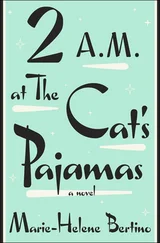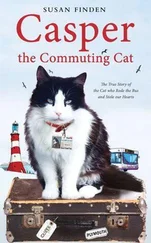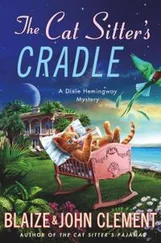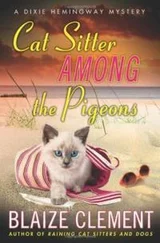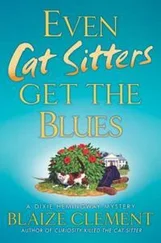
This book is dedicated to my family, always loyal, always supportive, always there for me whenever I need them. I hope they know that even when I neglect to tell them, my love surrounds each of them every moment.
Acknowledgments
As usual, this book and all the books in the Dixie Hemingway Mystery Series owe their existence to the very capable hands of Marcia Markland, Senior Editor at St. Martin’s/Thomas Dunne Books, and to Assistant Editor Kat Brzozowski.
Copy Editor India Cooper’s eagle eye caught authorial goofs such as having a lane curve in a particular direction, except when it didn’t. Thanks, India!
No book finds a reader unless readers know it’s out there. Hector DeJean, Associate Publicity Director, and Sarah Melnyk, Publicity Manager, are tireless in letting people looking for their latest “Dixie fix” know when it’s on its way to them.
During the creation of the book, the “Thursday Group”—Greg Jorgensen, Madeline Mora-Sumonte, Jane Phelan, and Linda Bailey—patiently listened to half-baked ideas and tentative explorations. Thanks, guys!
A million thanks to the distribution reps who see that bookstores have the books, and the overworked and underpaid booksellers who loyally display, recommend, and promote Dixie Hemingway. And to Al Zuckerman at Writer’s House, the consummate gentleman who has introduced some of the world’s greatest writers to the world, but still pays me as much attention as he does them. That’s a rare quality in an agent, and I value it highly.
When I need answers to sticky questions relating to local law enforcement rules, I turn to homicide detective Chris Iorio of the Sarasota County Sheriff’s Department, who always patiently answers my law enforcement questions.
Last but by no means least, a big thank you to all the deputies who keep Siesta Key its calm, laid-back self. You may not realize it, but everybody on the Key recognizes your work and is grateful for it.
How dreary to be somebody!
How public, like a frog
To tell your name the livelong day
To an admiring bog!
—Emily Dickinson (1830–1886)
Contents
Title Page
Dedication
Acknowledgments
Epigraph
Chapter 1
Chapter 2
Chapter 3
Chapter 4
Chapter 5
Chapter 6
Chapter 7
Chapter 8
Chapter 9
Chapter 10
Chapter 11
Chapter 12
Chapter 13
Chapter 14
Chapter 15
Chapter 16
Chapter 17
Chapter 18
Chapter 19
Chapter 20
Chapter 21
Chapter 22
Chapter 23
Also by Blaize Clement
Copyright
1
When you live in a resort area, every third person you meet on the street may be somebody famous. Here in Sarasota, which probably has more famous personalities per capita than any other city in the world, you might sit beside Toby and Itzhak Perlman in a movie theater or see Stephen King in Circle Books on St. Armands Key. We locals stay cool about it. We don’t run up to them and gush like yokels. We just dip our heads in silent respect and hope they notice how generous we are to grant them privacy. If we should become friends with one of them, the way I did with Cupcake Trillin and his wife, Jancey, we don’t go around bragging about it. We treat them like any other friend, but we’re always aware that fate has given them an extra allotment of talent or looks or determination that the rest of us don’t have.
I’m Dixie Hemingway, no relation to you-know-who, that other famous Floridian. I live on Siesta Key, which is one of the semitropical barrier islands off Sarasota—the others being Casey, Bird, Lido, St. Armands, and Longboat. Connected by two drawbridges, Siesta is the closest to the mainland, and in most respects, it’s like a small town. People gather for sand-sculpting contests, Fourth of July fireworks, and Christmas tree lighting. They run with their dogs on the beach, walk to the post office inside Davidson Drugs, gossip over coffee at one of our gourmet coffee shops. So far, we’ve been able to keep chain stores off the island, and we’re proud that all our businesses are locally owned. Except in “season,” when snowbirds come, the key is home to about seven thousand people. During season, we swell to about twenty-four thousand, and traffic and tempers get a little quicker.
I live here for the same reason so many famous people have second or third or maybe eighth homes here—because it’s a paradise of riotous colors, balmy sea breezes, cool talcum sand beaches, and every songbird and seabird you can think of. Snowy egrets walk around in our parking lots, great blue herons stand vigil on people’s lawns, and if we look up we see the silhouette of frigate birds flying above the clouds like ships without a home.
My only claims to fame are that once I went totally bonkers while TV cameras rolled, and later I killed a man. I was a sheriff’s deputy when I went crazy, but I didn’t kill anybody until after I’d got myself more or less together and became a pet sitter. Pet sitting is a lot more dangerous than people think.
Cupcake Trillin’s fame came from being an immovable inside linebacker for the Tampa Bay Buccaneers. He’s the size of a walk-in closet and has one of the tenderest hearts in the universe. He and I became friends when we rescued the baby of his best friend.
He and Jancey had left their two cats, Elvis and Lucy, in my care while they spent a two-week vacation in Parma, Italy. For Jancey, it was a long-planned chance to learn to make authentic Italian dishes. For Cupcake, it was a last-minute change of plans—he’d been widely reported to be attending a private meeting of fellow athletes who sponsored a camp for disadvantaged kids—but a welcome opportunity to get personal with honest-to-God prosciutto and Parmesan cheese.
The Trillins lived on the south end of the Key in an exclusive gated community called Hidden Shores. Since the famous and rich are always on guard against intruders, the main difference between Hidden Shores and a maximum security prison is that it costs big bucks to be confined in Hidden Shores. In addition to a security gate, a tall stucco wall hung with riotous bougainvillea and trumpet vine surrounds the area. Those pretty flowers conceal coiled razor ribbon.
Cupcake and Jancey had been in Italy a week on the Tuesday morning when their lives and mine took a sudden turn. It was early, with a few horsetail clouds fanning a mango sky, when I drove up to the Hidden Shores gatehouse. I punched in my temporary security code and watched the gate slide open. In our humid climate, most entry gates are built of aluminum, but this one had been powder coated to look like wrought iron. A good seven feet tall, it had sharp spikes at the top to discourage anybody rash enough to think about climbing it. As it opened, I kept one eye on the rearview mirror in case a robber or serial killer tried to whip around my Bronco and race through ahead of me—places like Hidden Shores are guaranteed to make anybody paranoid.
A human is usually at the gate, but at that hour the gate was unmanned. I guess the security people figure robbers work nine to five. As I pulled through the opened gate, my name, the time, and the date were electronically recorded at a security company’s office. More than likely, my photo had also been snapped by a hidden camera.
In the Trillins’ driveway, I took a moment to flip open my notebook to remind myself of my temporary house code number, then hustled up the path to the front door. I was humming under my breath when I punched in my code. I think I was still humming when I turned the doorknob and pushed the door open, but the instant I stepped into the foyer I froze.
Читать дальше



